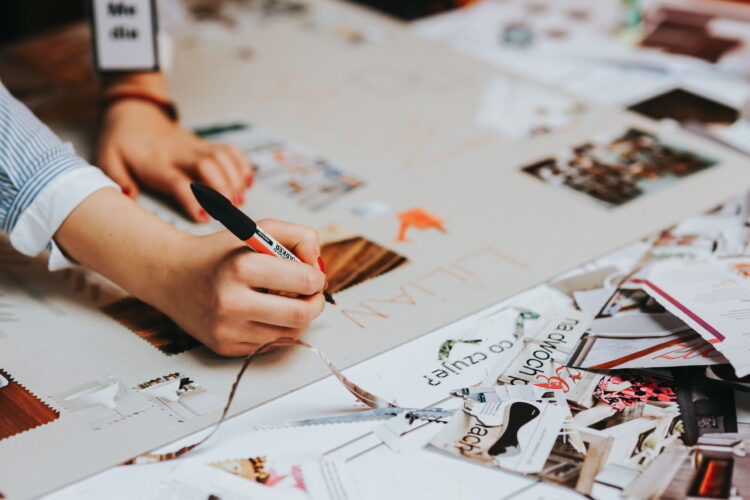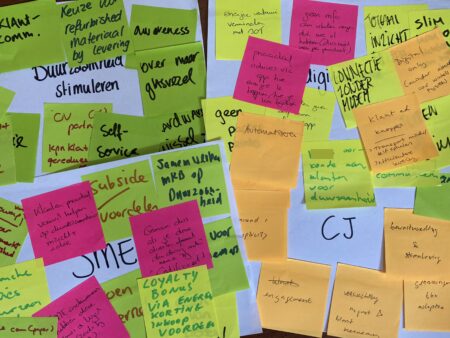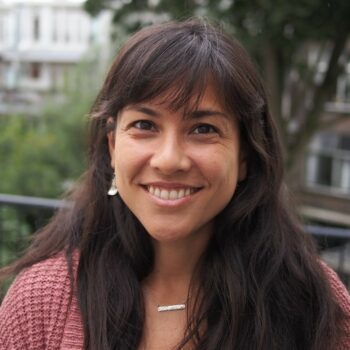How creative sessions can inspire and engage stakeholders
by Hoonhorst, Paulien
May 2, 2022

When doing your graduation project at a company, you soon realize there’s a lot of opportunities for stakeholder* engagement. When starting, you’re meeting a lot of new people. Of course, not everyone you meet is initially invested in your work but you might want to keep them informed for a later stage in your project or to simply ask for thoughts or opinions on a direction or design. It’s also fun to interact with people that are eager to know more about the topic you’re working on and the design you’ll come up with.
But how do you get your stakeholders involved? In this blog post, I write about how I was able to engage people who were already interested in my project, but also how I used a creative session to get those who were initially unaware of what I was working on interested in my topic.
*Stakeholders for a graduation project are people or organizations that have an interest in your work and can influence the project or are influenced by the outcomes. These can include your project mentor, product or service users, and your day-to-day team. Individuals can become stakeholders from the start or they can become interested in the project after it starts.
More than just meetings – how I involved stakeholders
Engaging stakeholders from the start of your project is beneficial because they can help in crafting your project path and provide insights you did not think of. These inputs can improve project outcomes and help you work out unforeseen challenges. My project is about creating a customer experience strategy to enable environmental sustainability through the use of telecommunication within small to medium business (aka SMEs).
When starting my graduation project, I immediately had the opportunity to speak to a lot of people within the company I’m working with to narrow down my project topic, which was at that point still quite broad. The main stakeholders for my project involved members of the section team at the company I work with. Most meetings were held via Zoom due to Covid and the policy was to work from home. Meeting over zoom is also more sustainable (as there’s no fuel burnt through commute) and convenient because not everyone is working at the same office location. For the meetings I prepared specific questions and asked about the company background and possibilities. It was great to translate this knowledge to potential project directions. Speaking with these individuals was also beneficial because they introduced me to other teams at the company where I gained more information. After interviewing SMEs and conducting a literature research, I was able to narrow down my project focus.
The section team I was part of met weekly and I was able to explain to them what “sustainability by design” is. I soon realized, that although the company is doing well on environmental sustainability goals, not all employees are fully aware of it, including some members of the section team. I thought this was a great time for me to introduce the topic and get more people interested in sustainability 🙂
Getting creative with sustainability

I find sustainability an important topic and wanted to make sure the audience was inspired. Rather than just a boring presentation about sustainability and what the company is already doing on the topic and what could be in the future, I decided to conduct a more interactive session. I invited my company mentor who is an expert in sustainability at the company to give a short presentation. He discussed the company’s current sustainability status and provided some examples of what the company is doing to be more sustainable.
Then, it was time to get creative. I held a fast creative session to get the employees to think about sustainability themselves. The team was divided in 4 groups of around 6 people and everyone was provided with markers, paper and post its.

We started with a warm up exercise. Until this point, the audience was just listening to the presenter. So we did a drawing exercise where someone doodles something and someone else adds to the doodle to create an image. This is a fun way to make sure that everyone is active and engaged because they all had to draw something on paper. After the drawing exercise, I led a session to brainstorm around the topic of “sustainability by design”. I handed out sheets with focus words (e.g. stimulate sustainability, SME, customer journey) where teams wrote out ideas on post its onto the paper. The groups then switched papers and then brainstormed again with a new focus word building on the previous group’s ideas or adding new ideas. A timer was set to keep track of time. We circulated the papers twice and then someone from every group presented the outcome, best or craziest idea that the group had come up with.
In a very short amount of time, a lot of new ideas emerged. It was fun to see that the team liked to do something practical and creative and was actively participating. The atmosphere in the group was relaxed and open and people were willing to share their ideas. Because of this, the quality of ideas was very high and I certainly was inspired by them, although we only had a limited amount of time. It also showed that the team is very well aware about how sustainability can add to their daily operations and what can be done in the field.
Unexpected impacts
For me, the workshop was a quick way to get to introduce myself to the people I hadn’t met yet and show them what I’m working on. Afterwards, some people came to me with some questions about sustainability, my project or just to thank me for the fun session. It felt very welcoming that they were so enthusiastic and wanted to know more, which exactly was what I was hoping for! Something I was surprised by was that after my workshop, people were mentioning sustainability during work. I overheard someone say: “should we really print this out on paper? This morning we had a workshop on sustainability and now we’re printing out the same papers twice.” And someone to another colleague: “Do you think we should do something with sustainability in this customer journey?”. As I didn’t think about the impact the session could create beyond the workshop, I was so cool to hear those things occur in the office!
The session turned out great, not only did I get some insights and ideas to apply to my project, I was also able to highly engage the whole team, with limited time needed. I think doing a creative session is a good way to get many people engaged at the same time and give the topic a boost in the company. People now think more about environmental sustainability within the team!
About the author
Paulien Hoonhorst

TU Delft Supervisory Team
Ruth Mugge
Erik-Jan Hultink
Introduction image (creative commons license): https://www.piqsels.com/en/public-domain-photo-szyqi
